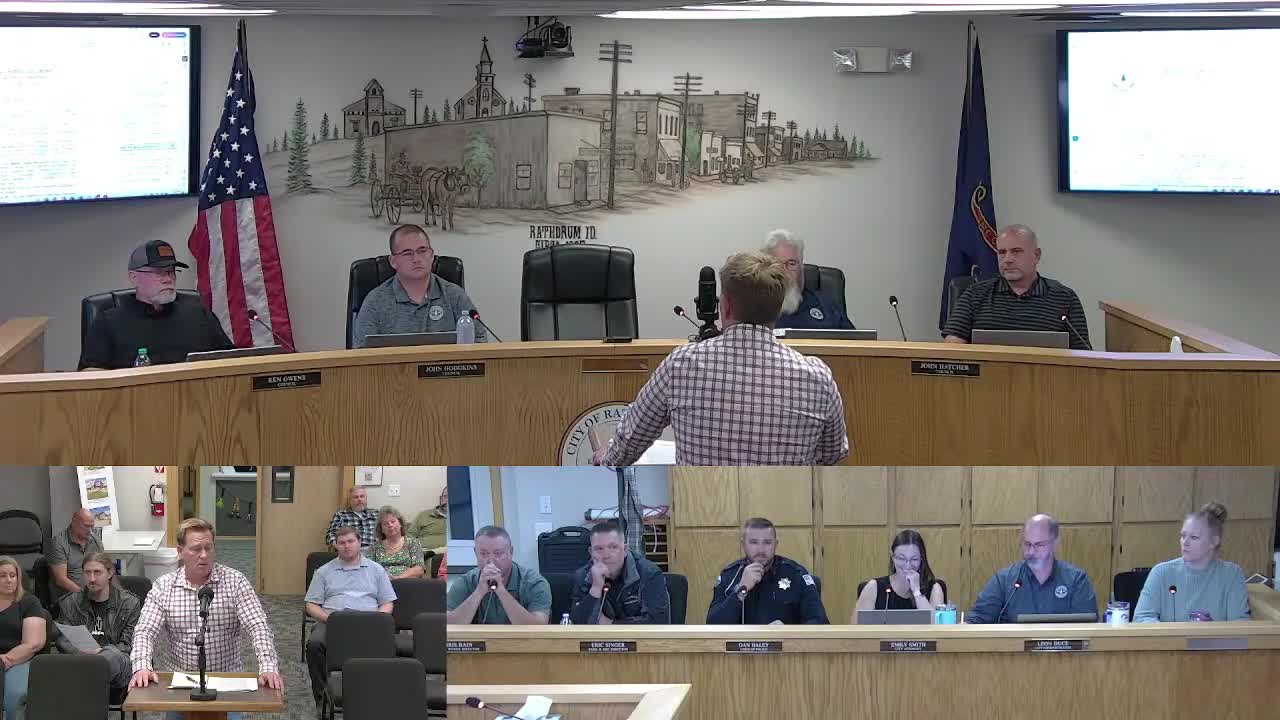City monitors morning pressure drops in Brookshire as water master plan modeling proceeds
October 09, 2025 | Rathdrum, Kootenai County, Idaho
This article was created by AI summarizing key points discussed. AI makes mistakes, so for full details and context, please refer to the video of the full meeting. Please report any errors so we can fix them. Report an error »

City water staff told the council they are monitoring short, early‑morning pressure drops in the Brookshire subdivision and are expediting parts of the water master plan to identify solutions.
Preliminary field monitoring shows the lowest pressures observed during peak morning demand drop into the mid‑30s psi (about 35 psi) for brief periods, staff said. The timing corresponds with early‑morning residential activity and irrigation start‑ups; pressures recover quickly after the morning peak. Staff emphasized the findings are preliminary and that modeling by the city’s consultant (JUB) will quantify duration and specific mitigation steps.
Options under study include looping and redundancy projects. Staff described a proposed water main extension from Highway 41 to the North Idaho College area on Lancaster Road; modeling is expected to indicate that such a line would provide modest pressure improvement (staff estimated 3–5 psi improvement in the affected area) but would primarily increase flow and redundancy for the network.
The council was told the city signed a master‑plan contract with the consultant earlier in the year and expects preliminary modeling results this winter with final reporting within a roughly 12‑month contract window. Staff also reported they deployed pressure gauges in Brookshire and Corbin Crossing to collect paired data with a valve open/closed to improve the model inputs.
No emergency restrictions were imposed. Staff described the situation as within acceptable operating ranges at present and said seasonal irrigation shutdowns reduce the issue in winter; they recommended following modeling results for long‑term capital improvements.
Preliminary field monitoring shows the lowest pressures observed during peak morning demand drop into the mid‑30s psi (about 35 psi) for brief periods, staff said. The timing corresponds with early‑morning residential activity and irrigation start‑ups; pressures recover quickly after the morning peak. Staff emphasized the findings are preliminary and that modeling by the city’s consultant (JUB) will quantify duration and specific mitigation steps.
Options under study include looping and redundancy projects. Staff described a proposed water main extension from Highway 41 to the North Idaho College area on Lancaster Road; modeling is expected to indicate that such a line would provide modest pressure improvement (staff estimated 3–5 psi improvement in the affected area) but would primarily increase flow and redundancy for the network.
The council was told the city signed a master‑plan contract with the consultant earlier in the year and expects preliminary modeling results this winter with final reporting within a roughly 12‑month contract window. Staff also reported they deployed pressure gauges in Brookshire and Corbin Crossing to collect paired data with a valve open/closed to improve the model inputs.
No emergency restrictions were imposed. Staff described the situation as within acceptable operating ranges at present and said seasonal irrigation shutdowns reduce the issue in winter; they recommended following modeling results for long‑term capital improvements.
View the Full Meeting & All Its Details
This article offers just a summary. Unlock complete video, transcripts, and insights as a Founder Member.
✓
Watch full, unedited meeting videos
✓
Search every word spoken in unlimited transcripts
✓
AI summaries & real-time alerts (all government levels)
✓
Permanent access to expanding government content
30-day money-back guarantee
